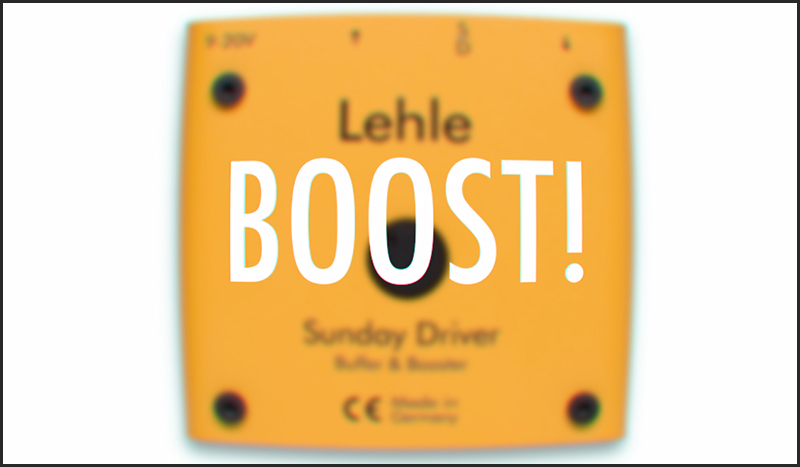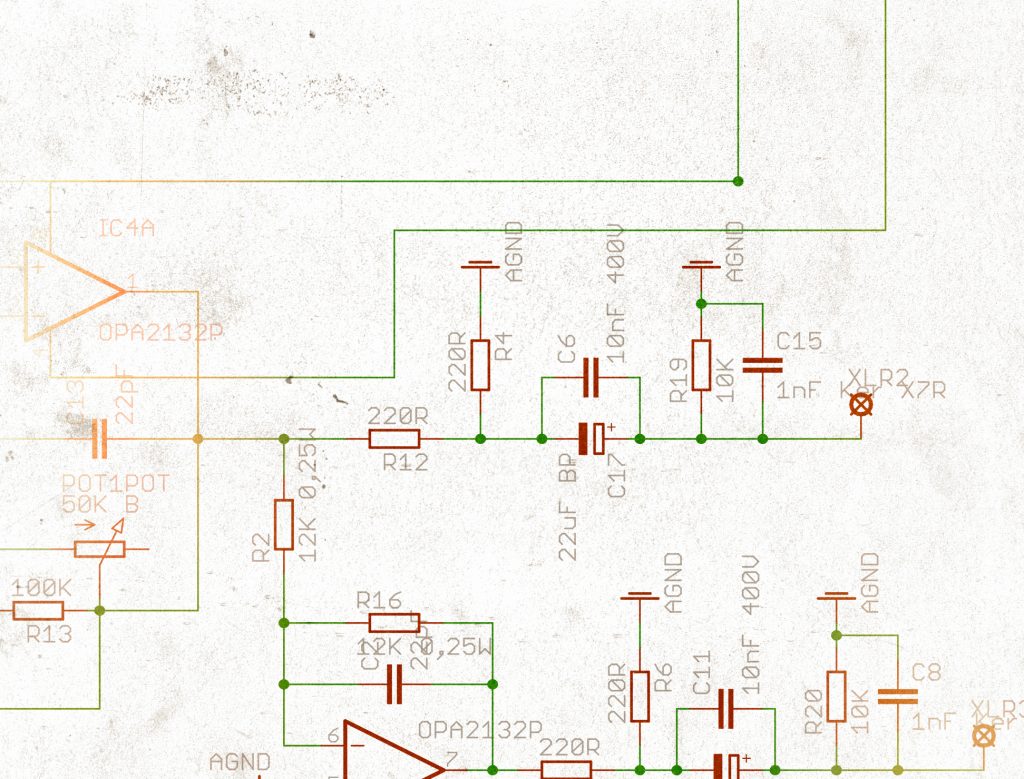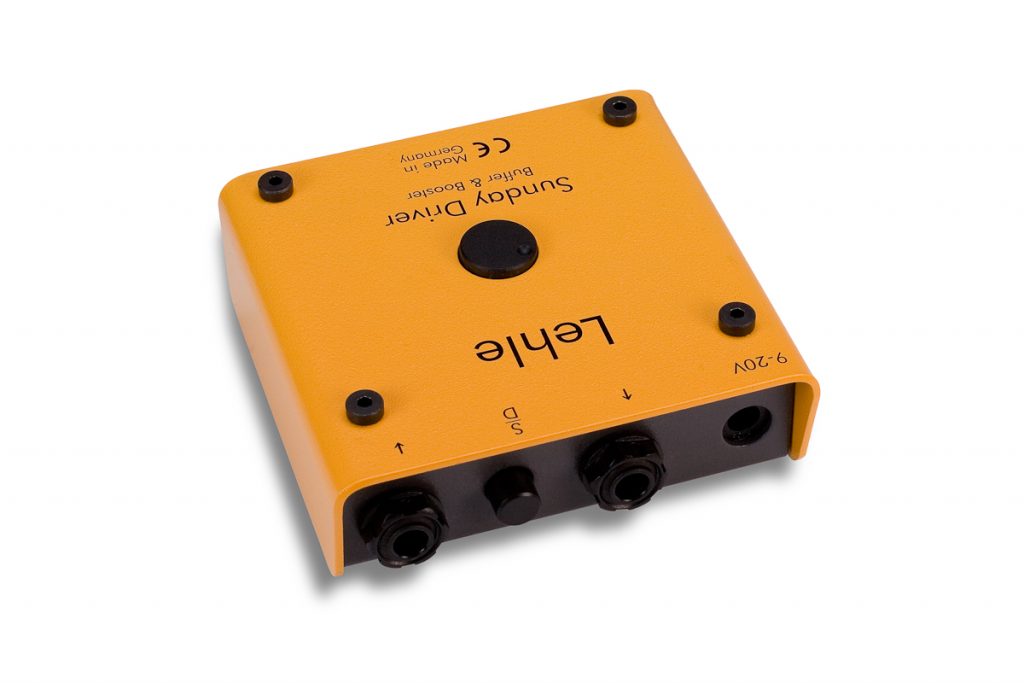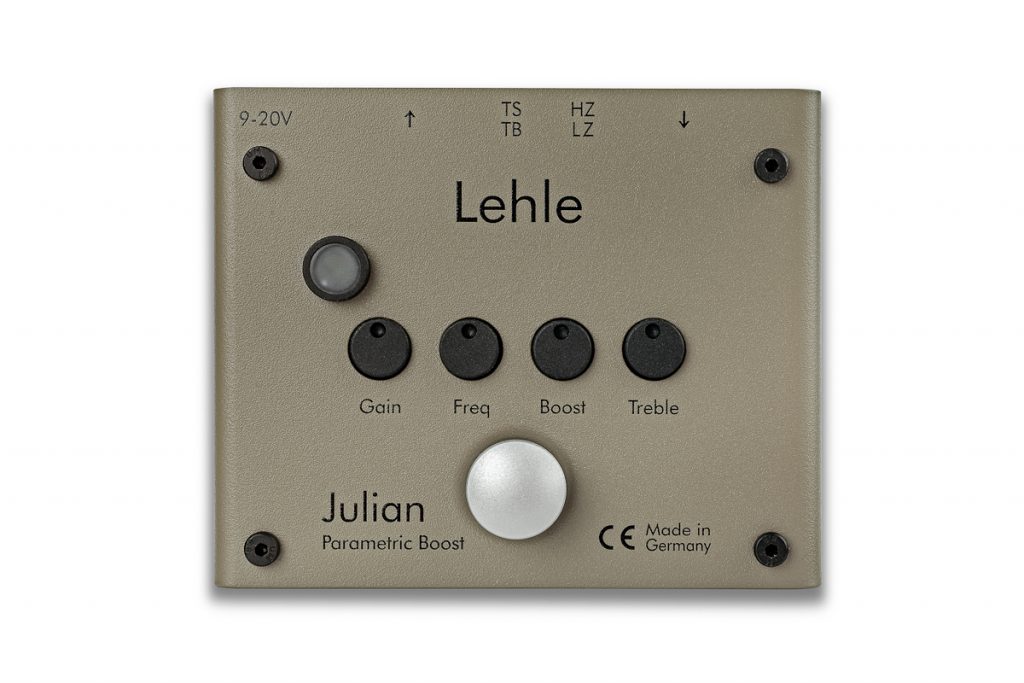
We’ve all been there: playing that perfect song, 16 bars before the solo, in love with the sound, 8 bars before the solo, still in love with that sound, preparing the foot to hit the booster pedal so that everyone can hear you solo with that incredible tone.
Your 40 seconds of fame start now!
Unfortunately the sound isn’t louder, but rather muddy and undefined, or the top-end is harsh and you’ve lost all the depth in the low frequencies. So what happened?
While you’ve landed here, reading this blog entry, others have gone to a forum to write: “My current boost pedal lacks transparency! I need an absolutely clean linear boost, which doesn’t add or suck highs and just increases the volume for my solo!“.
The replies are mostly the same: “Use the ultra linear YXZ!“, “Pedal ZXY is the best clean one!“, “TS9 is the way to go!“, “You need a volume pedal!“ and “I use an equaliser! IMHO the best!“.

Believe me – I see these posts all the time and you probably have as well.
So, who is right? Nobody? Everyone? Unfortunately there’s no answer to satisfy the poor guy… I think he’s simply asking the wrong question.
Ok, ok, ok, … lets sort this out and consider the topic in all its aspects.
There are 3 points:
- technical aspects
- signal interaction of the gear used
- hearing and listening habits
“Technical aspects sounds boring!“
Yes, absolutely. We want to make music, right?
But what if I told you that if you had an absolutely clean & linear boost, you probably wouldn’t like using it with a valve amp?
It isn’t hard to build something like that, but it won’t be the ultimate weapon for every amplifier or for every situation. Depending on your amplifier and the gear you are using, there’d be a high chance the sound would be harsh in the highs or muddy in the low end. Why? This has something to do with the architecture of your valve guitar amp and the behaviour of the valves.
Virtually no guitar amps have a linear frequency response and depending on the amplitude of the incoming signal, the amp’s signal is more or less distorted but never linear. So perhaps we should reconsider the term “linear boost“.
I’ll give you an example:
“Damaged eggs don’t sound fine!“
Imagine you have a bucket. This is your amplifier. I give you a few eggs, which are your signal. You put the eggs in the bucket, which is now half-full. You put the lid on the bucket. Perfect.
You want a louder signal? You want a boost?
No problem. I give you a few more eggs and you put them carefully into the bucket. Still fine, no eggs are damaged, although the bucket is full to the brim. The lid only just fits, but you again want more boost.
You remove the lid, I give you more eggs and you press the lid onto the bucket so it closes. You can imagine what just happened. The result is that a few eggs are damaged or broken. Your amplifier is distorting, because it can’t process the signal anymore in the way you wanted it to.
Imagine you have a high gain amp and it’s already feeding-back. What you actually have is a bucket full of scrambled eggs and now you put more eggs in it. Good luck with that!
Do you remember the start of this post? The scenario where you tried to boost the sound of the solo? You had put too many eggs in a bucket which was already full. That’s what happened. The result was damaged eggs. And damaged eggs usually don’t sound good.
Which brings me to the next topic: interaction.

“Bucket full of eggs!“
More important than understanding how many eggs you can put in a bucket, is to understand the principle of interaction.
There are so many different kinds of amplifiers, pedals, guitars and stuff on the market, I can’t even begin to cover every single combination.
But back on topic: why would we need an absolutely linear booster and why should we take a look at all the different pedals?
The answer is complicated, because it’s all about interaction.
If you have enough headroom (size of the bucket) in your amplifier’s gain stage, there’s a high chance a boost will simply increase the volume without distorting or changing the frequency (you can fill more and more eggs in the bucket without breaking them).
If your amp is already distorting (bucket’s full), you can’t boost it to get more volume. If you boost a distorted amp, you usually just get more distortion and change the frequencies. There’s no option to increase the volume radically. A solution is to place a boost pedal after the preamp in the amp’s effects loop. Usually the power valves of your amp still have enough headroom to work with the increased volume coming out of your booster. Try this. If you simply want to change the volume of your amp, place our SUNDAY DRIVER SW in the fx-loop of your amp and dial in a few dB. Depending on the power valves of your amp you will get a drastic volume change or possibly just a smaller change if the power valves are already compressing (valve compression).
“My booster has a high cut!“
At the beginning I mentioned issues with high and low frequencies . Here’s how most guitar valve amps work: Depending on the incoming frequency range and the bias point of the valve, it begins to distort, but it also pushes, pulls or moves frequencies. And this is the reason why there are so many different boost pedals on the market and why the opinions on them differ a lot.
I really recommend that you try different booster pedals, simply trust your ears and listen to how your amp reacts to an increase in incoming signal. And then choose the one you like. Maybe there’s a booster pedal called “XYZ“ and some people complain that it cuts highs. But maybe those people used this pedal “XYZ“ with a clean amp? The preamp valves are not even tickled and the result is that the “picture“ we get has a loss in the highs. But what if you boost an amp with preamp valves that are already slightly distorting? If you used a linear boost it could be that the sound you get is harsh in the highs because the amp’s valves emphasise the highs, but compress the mids and low end (proof that guitar valve amps don’t work linearly). In this context if you chose pedal “XYZ“ your sound would sound more organic and balanced because the high cut in the pedal is a perfect match for the amp’s valves.
“Driving on Sundays!“
Take a look at the SUNDAY DRIVER. There’s the S and D mode. S is for Sunday and D for Drive. In Drive mode the SUNDAY DRIVER works linearly.
Besides buffering, it’s great for increasing the volume linearly and it works well as a preamp especially with acoustic instruments.
However in Sunday mode there’s a slight cut in the highs. The more boost you’re dialling in, the lower the cut gets. The reason is simple: the more gain you send into the valves, the more harsh they can sound in the highs. The high cut in the SUNDAY DRIVER compensates this.
“More flexibility!“
A way more flexible pedal is the LEHLE JULIAN. It has a gain control like the SUNDAY DRIVER, but you can dial in +15 dB or -15 dB. There’s a parametric mid band (250 Hz – 5 kHz) which you can cut or boost with +/- 18 dB and find out which is the perfect frequency spot to tickle or push your preamp valves. And finally there’s a +/- 18 dB treble at 10 kHz. This gives you more transparency or cuts out the harsh highs. There are more features in the pedal, like true/buffered-bypass and an impedance switch to bring back the familiar sounds of the 60s/70s.
“I can hear frequencies!“
The last stop on this journey is “hearing and listening habits“. It’s just a short trip I can offer, because the field of acoustics and habits are endless.
Like valves our hearing isn’t linear. A dramatic change in volume and we hear completely different frequencies. Try this: listen to your favourite song at a very, very low volume. You probably will hear instruments, melodies and artefacts you never heard, although it’s your familiar. Listen to the same song at a deafening volume. You get a completely different “picture“ of this song. And probably tinnitus.
Depending on your age, time of the day and your mood, it changes again.
This is further complicated by the different materials in rooms and halls (brick, concrete, wood, curtains, windows, steel, etc.), there’s virtually never an absolutely true response between us and the speaker. Oh, speakers. You guessed it. Speakers don’t work linearly either.

“Scrambled eggs!“
Our habits are also influenced by the decade we grew up in. For me the perfect tone is different to the one Burkhard Lehle possibly likes. Born in different decades, we probably have a different perception or idea of the “perfect tone“.
To sum up: listen to your amp and what it does if you add a booster. Hopefully you now have a more specific idea why every booster has its right to exist (to fight for your right to party) and understand their many possible applications.
P.S.: No eggs were harmed in this post.




